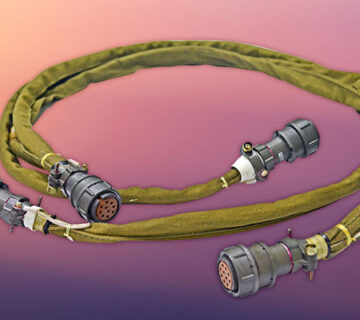Air core inductors are essential components of many electronic systems, particularly important in high-power applications where reliability and efficacy are critical. It takes careful consideration of the design, materials used, and production processes executed to provide optimal performance in such challenging conditions. Let’s uncover some techniques for maximizing air core inductors to withstand high power levels while maintaining reliability and effectiveness in such high-power applications. Let’s explore the essential strategies that allow air core inductors to perform well in high-power settings, from enhancing cooling systems to selecting high-temperature materials and optimizing winding shapes. Manufacturers can guarantee that air core inductors satisfy the demanding specifications of contemporary high-power electronic systems by combining cutting-edge design techniques with sophisticated production procedures, opening the door for enhanced performance, reliability, and longevity.
Challenges in high-power applications
Air core inductors face considerable issues when used in high-power applications; thus, strong design techniques and careful consideration are required to achieve optimal performance and reliability.
- Heat dissipation: This is one of the main concerns. Elevated temperatures may arise from high currents flowing through the inductor, which may cause significant heat generation and perhaps thermal component deterioration. It could be necessary to use efficient heat dissipation devices, such as heat sinks, thermal vias, or forced air cooling, to reduce temperature rise and keep the inductor operating within reasonable bounds.
- Voltage handling: Managing voltage is yet another crucial issue. It is necessary for air core inductors to be built to sustain high voltages without breaking down or having their insulation fail. To provide sufficient electrical isolation and avoid voltage-related problems, this calls for careful consideration of insulation materials and design strategies.
- Eddy currents: In close proximity to conductive materials, high-frequency operation in high-power applications can cause eddy currents. These eddy currents cause more losses and lower the inductor’s efficiency. The inductor’s design and layout must be carefully considered in order to minimize the impacts of eddy currents and maximize performance.
- Mechanical stability: High-power applications can face mechanical stability issues in addition to electrical ones. The long-term dependability of the inductor may be jeopardized by mechanical strains brought on by temperature expansion and contraction. To guarantee that the inductor can bear these forces and continue to function over time, proper mechanical design is crucial, which includes choosing sturdy materials and manufacturing methods.
A comprehensive strategy that takes into account both mechanical and electrical aspects is required to address these issues. Air core inductors may be optimized to meet the demanding needs of high-power applications while guaranteeing reliability and longevity by using strong design principles, proper material selection, and efficient cooling techniques.
Optimization strategies
It is essential to optimize air core inductors in high-power applications. Numerous tactics might improve their dependability and performance, guaranteeing they can withstand the rigours of demanding operating conditions.
- High-temperature materials: In order to survive high temperatures, it is crucial to use materials with good thermal conductivity and stability. The capacity of the inductor to function in high-temperature conditions without degrading is sometimes improved by the use of high-temperature ceramics or polymers.
- Increased conductor size: Using thick wires or multiple parallel conductors can lower resistance and minimize voltage loss, which in turn improves efficiency and strengthens the inductor’s capacity to withstand high power levels with negligible losses.
- Optimized winding geometry: It’s crucial to design the coil winding for optimal packing density and to minimize proximity effects. This improves overall performance and reduces eddy current losses, especially in high-frequency and high-power applications.
- Enhanced cooling: Improving heat dissipation is important to reduce the rise in temperature and maintain reliability. Heat produced during high-power operations can be efficiently dissipated using methods like incorporating heat sinks, thermal vias, or forced air cooling.
- Insulation and encapsulation: To guarantee that the inductor can tolerate high voltages and mechanical loads, proper insulation and encapsulation procedures are essential. This ensures long-term reliability and the prevention of insulation failure.
- Quality control and testing: Strict testing procedures and quality control procedures are necessary to ensure that air core inductors operate consistently and reliably in high-power applications. Thorough testing, such as mechanical, thermal, and electrical tests, helps in identifying and fixing possible problems prior to deployment.
Through the implementation of these optimization techniques, the air core inductors’ longevity, durability, and efficiency can all be improved, guaranteeing that they satisfy the demanding specifications of high-power applications.
Applications of air core inductors
Optimized air core inductors are critical components of many high-power systems, such as power supplies, motor drives, renewable energy systems, and RF amplifiers, where they filter harmonics, ensure signal integrity, and facilitate efficient energy conversion.
- Power supplies: Optimized air core inductors are essential for energy conversion and storage in high-power switch-mode power supplies and DC-DC converters. They are essential in controlling the flow of current and voltage, which guarantees effective power delivery.
- Motor drives: Air core inductors are used in motor drives and variable frequency drives to filter out harmonics generated by the motor operation. These inductors guarantee that the motor runs smoothly and effectively by flattening the current waveform, which reduces system wear and tear.
- Renewable energy systems: Optimized air core inductors are essential for effective power conversion in inverters and grid-tie systems used in solar and wind energy applications. These inductors help convert solar or wind turbine DC electricity into grid-compatible AC power. They also have a significant impact on grid synchronization, which guarantees the smooth integration of renewable energy sources into the electrical system.
- RF power amplifiers: Air core inductors are crucial parts for impedance matching and signal filtering in high-power RF amplifiers and transmitters. They aid in ensuring that RF signals are transferred precisely, effectively, and without loss or distortion. Air core inductors maximize power transmission and signal integrity in RF systems by optimizing impedance matching.
Optimized air core inductors are essential to the effective functioning of high-power systems in each of these applications. They are essential parts of contemporary electronics because of their capacity to manage enormous currents, endure extreme temperatures, and keep their stability under difficult conditions. The significance of optimized air core inductors in high-power systems is anticipated to increase with the advancement of technology, spurring further research and development in this field.
Conclusively, the optimization of air core inductors for high-power applications necessitates a multidisciplinary approach that takes into account thermal, mechanical, and electrical considerations. The most prominent air core inductor manufacturers in India, such as Miracle Electronics, make major contributions to the advancement of design, materials science, and production processes in this field. The need for optimized air core inductors is expected to increase dramatically as power densities and technology advance, spurring ongoing innovation to address the ever-growing challenges associated with high-power systems.




